Antinol® Latest Studies
Sorted by recent
 Filter Studies by Smart Tags
Filter Studies by Smart Tags
Bone & JointCardiovascularCase Study & ProceedingCatDogEAB 277™EfficacyExotic PetImmunologyNeuro & BehaviorOphthalmologyOralRabbitRenalRespiratoryRodentSafetySkinUTI
Smart Search
Antinol® Case Study Contest 2020

The 8 Case Studies from Antinol® Case Study Contest of 2020.
________
1st Winning Awards
1) Use of PCSO-524® and Cyclosporin for Treatment of Immune-Mediated Polyarthritis in Dogs
2) Use of PCSO-524® for Supplementary Treatment of Protein Losing Nephropathy in Animals
________
2nd Winning Awards
3) Use of PCSO-524®(Antinol®) in a Pomeranian Dog with Degenerative Mitral Valve Disease (DMVD) and Cardiac Tumor of the Left Atrium
________
3rd Winning Awards
4) Use of PCSO-524 (Antinol®) for Treatment of Chronic Pododermatitis in FIghting Cocks
5) Use of PCSO-524® with Physical Rehabilitation to Regain Mobility in Dogs after Femoral Head and Neck Excision
6) Use of PSCO-524® (Antinol®) and Casting for Treatment of Tetraparesis and Neck Pain Due to Atlantoaxial Instability and Subluxation of the 1st-2nd Cervical Vertebrae
7) Effect of One Year Treatment with PCSO-524® on Feline Dermatophytic Pseudomycetoma

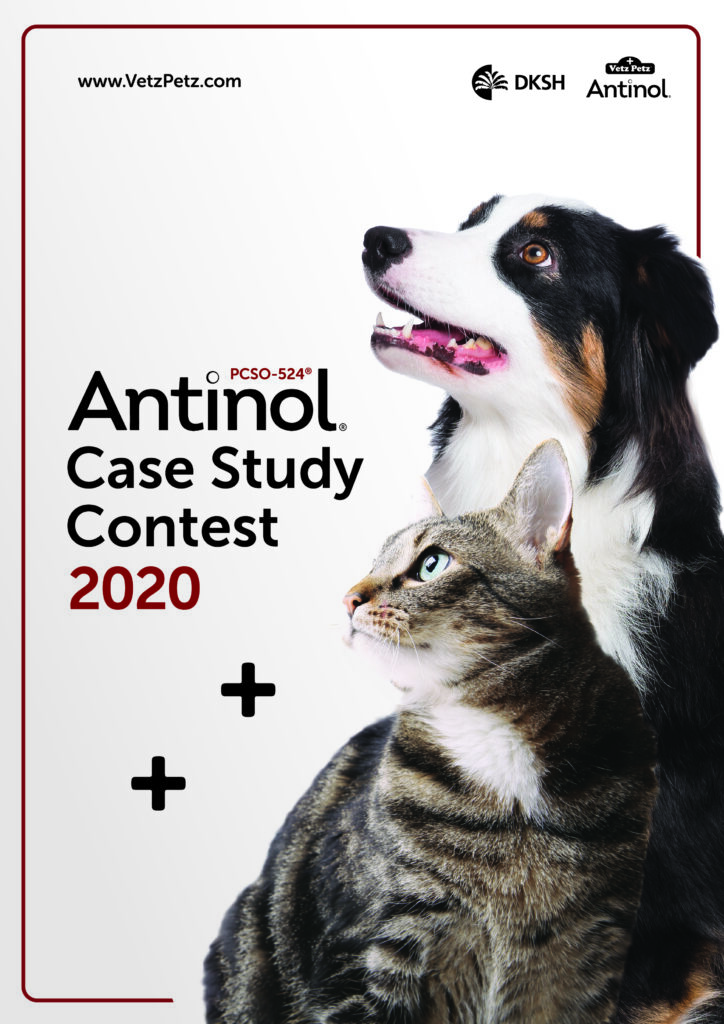

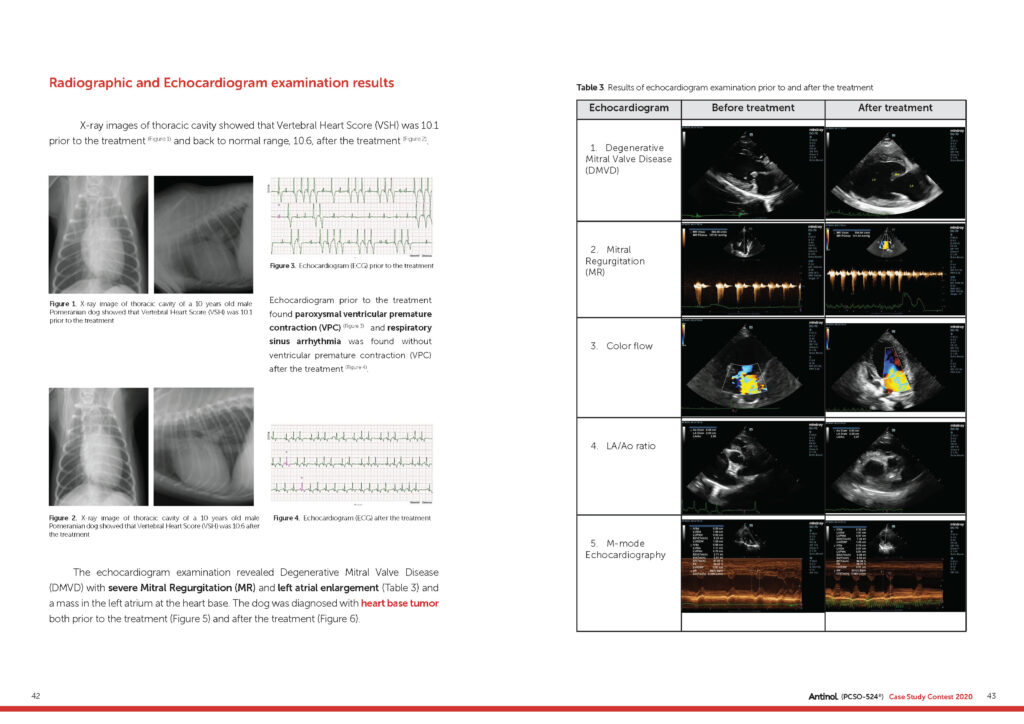
Use of PCSO-524® and Cyclosporin for Treatment of Immune-Mediated Polyarthritis in Dogs

An 8 years old Chihuahua dog was admitted to the Small Animal Hospital at Chulalongkorn University due to signs of depression, lethargy, lameness and joint effusion. Hematological examination and test of synovial fluid indicated Immune-Mediated Polyarthritis (IMPA).
Prednisolone, Gabapentin and Amoxillin-clavulanic acid were prescribed for the treatment. Abnormally increase of ALT, ALK and AST enzyme was observed 1 week later, therefore, the treatment was changed to Cyclosporin, Gabapetin, and PCSO-524®. The clinical signs continued to improve after the adjustment of prescription and Cyclosporin and Gabapetin were terminated after 3 and 4 months, respectively.
A follow-up examination at 4 months later showed no signs of lameness and joint effusion and no adverse effects caused by the long-term use of PCSO-524®.
The success of IMPA treatment is a result of rapid diagnosis and appropriate treatment protocol. Follow-up for treatment evaluation is necessary during the treatment course in order to reduce the impact on health and minimize the medication dosage without risk of causing adverse effects or recurrence of the disease.

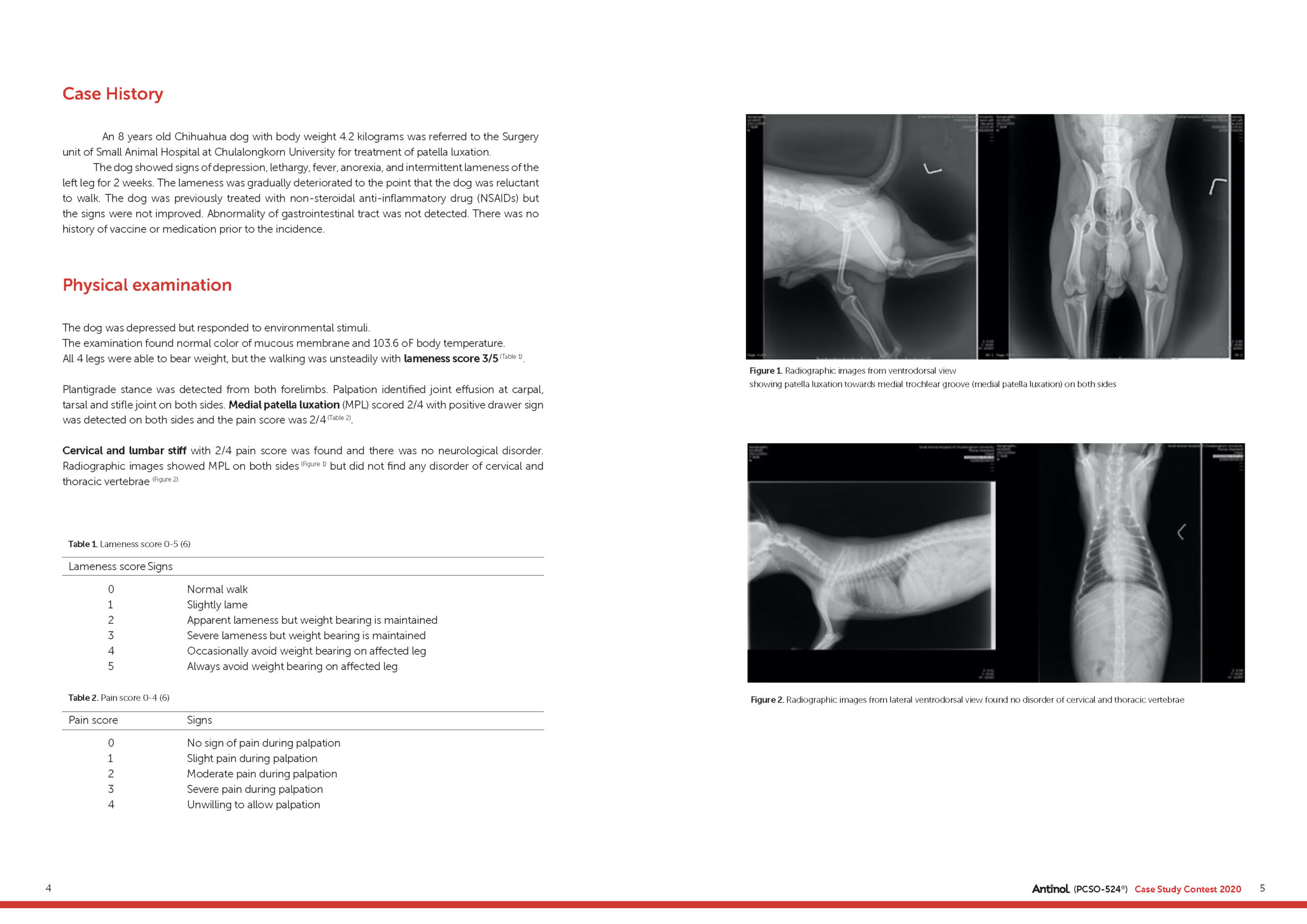
PCSO-524® for Treatment of Immune-Mediated Polyarthritis in Dogs

An 8-year old Chihuahua dog was admitted for surgical treatment of patella luxation at Small Animal Hospital of Chulalongkorn University, Thailand.
At 2 weeks prior to the hospital visit, the dog showed signs of fever, anorexia, lethargy, and lameness of the left leg. Non-steroidal anti-inflammatory drug (NSAIDs) was prescribed at that time but the dog had no response to the treatment.
The dog received prednisolone 0.6 mg/kg bid, gabapentin 10 mg/kg sid, samylin® liver supplement 1 tablet sid, and amoxicillin-clavulanic acid 20 mg/kg sid in the first week of the treatment. Then prednisolone was stopped due to elevation of liver enzymes; AST, ALT, and ALK.
The following 1-month treatment course included cyclosporine 6 mg/kg bid, gabapentin 10 mg/kg bid, samylin® 1 tablet sid, and PCSO-524® 1 capsule bid.

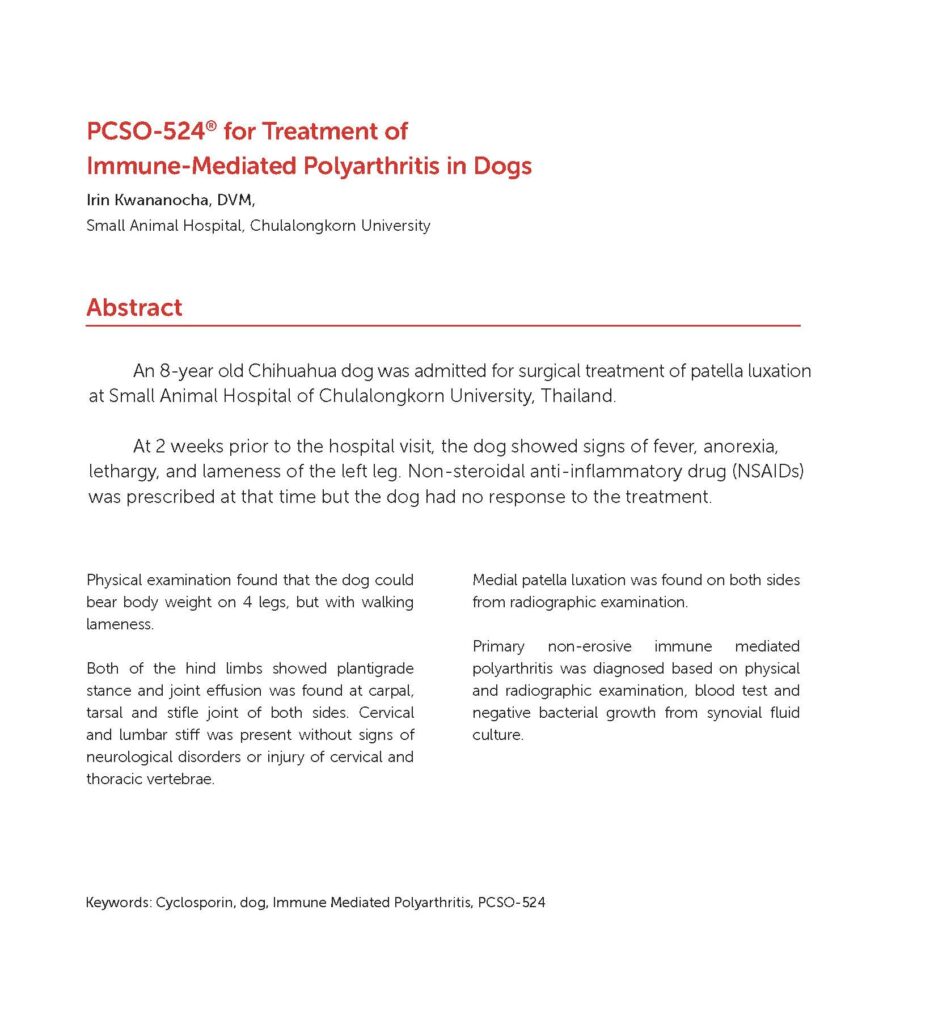

This article was summarized from the original article published in The Journal of Thai Veterinary Practitioners by the permission of Veterinary Practitioner Association of Thailand (VPAT)
Clinical Effect of PCSO-524® on 3 Osteoarthritic Cats Associated with Chronic Kidney Disease

Three cats suffering from chronic kidney disease were admitted to animal hospital.
The first cat showed sudden onset of right hindlimb pain without apparent cause. Bladder stone was found in the second cat while the third cat was admitted for nursing care. Caging was applied and fluid therapy were administered for the third cat. All 3 cats had never been diagnosed with arthritis prior to the admission.
X-ray examination showed symptoms of arthritis at hip and stifle joints. PCSO-524® was then administered daily for 60 days.
Pain evaluation using Feline Musculoskeletal Pain Index (FMPI), which is a reliable and effective method for pain evaluation in cats (Benito et al., 2013), showed that, after the treatment, chronic pain was decreased in all of the cats (Appendix 1). The cats’ behavior was nearly normal compared with the behavior before the treatment. Interaction between the cats and owners was improved as well.
By the end of the experiment, UP/C ratio was not altered and blood creatinine tended to decrease.

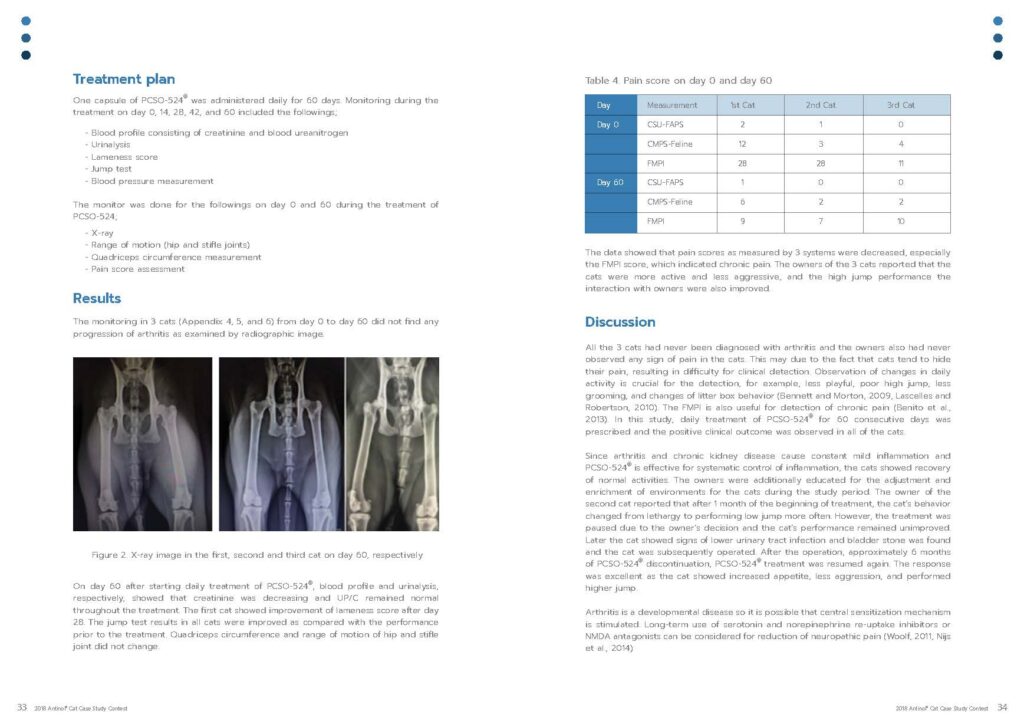
Use of PCSO-524® Combined with Surgical Treatment of Patellar luxation in Dogs

Five dogs with bilateral patellar luxation were presented at the Small Animal Hospital of Faculty of Veterinary Medicine, Chulalongkorn University.
Four dogs had grade 2, 3, and 4 medial patellar luxation in 3, 3, and 2 stifle joints, respectively. One dog had grade 3 bilateral lateral patellar luxation that had recurrent patellar luxation of left stifle joint for 6 months after previous surgery. All dogs had surgical treatment to re-align and stabilize extensor mechanism in the normal position.
The dogs received anti-inflammatory drug and PCSO-524® in combination with rehabilitation to restore normal limb function and muscle mass postoperatively. All dogs achieved good outcomes when compared with pre-operation. Range of motion was normal in all dogs and the patellae were in the normal position.
However, one stifle with previous reluxation and severe osteoarthritis had slightly crepitation when flexed and extended the stifle joint. Patellar luxation causes abnormal wear of the patella and trochlear ridges leading to lameness, muscle pain, and osteoarthritis.
The treatment focuses on stabilization of the stifle joint and restore limb function. Surgical treatment is recommended in most cases. Rehabilitation provides strengthen muscle, improves normal joint function, enhanceslimb function, and prevents complications.
Despite successful treatment for correcting patellar luxation, osteoarthritis remains occurrence in most cases.
Therefore, use of anti-inflammatory supplement such as PCSO-524® is important for long-term management with less side effect and safety for long-term use when compared with non-steroidal anti-inflammatory drugs.
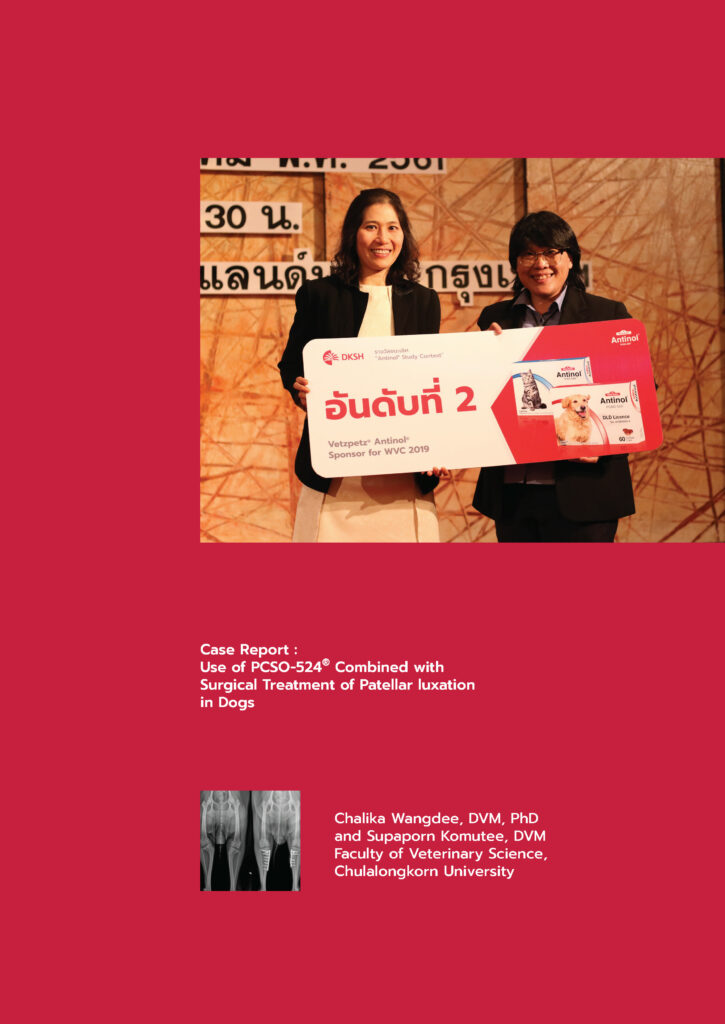
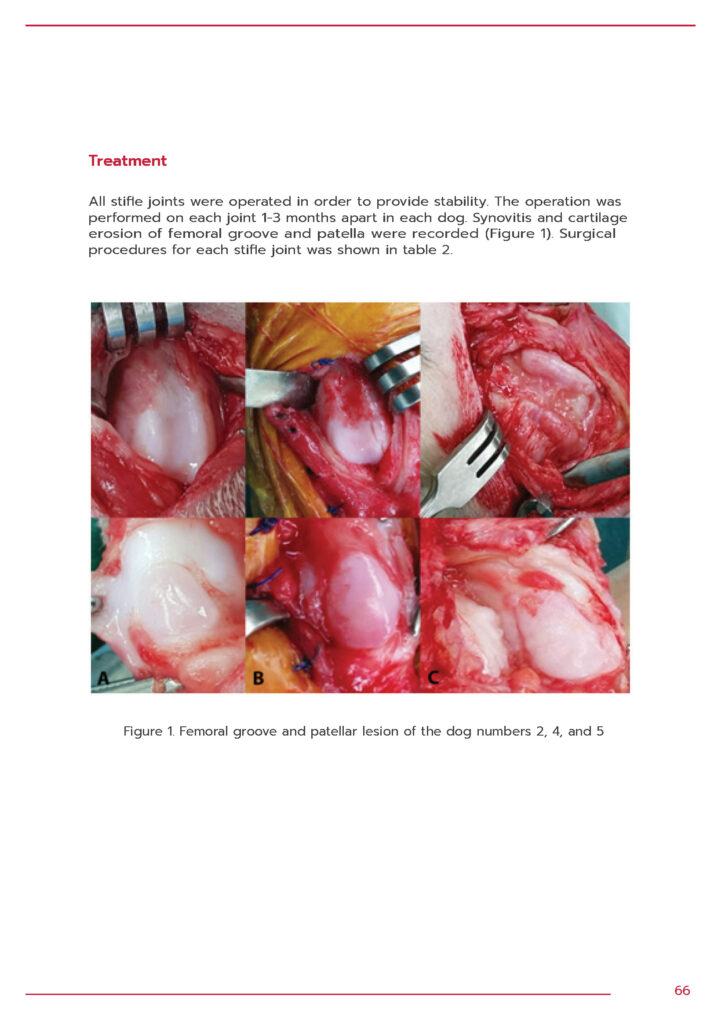
Use of PCSO-524® for Treatment of Spine Fracture in Conjunction with Pedicle Screw-Rod Fixation (PSRF)

An intact male mixed breed dog aged 2 years engaged in a fight with several dogs resulting in disable of hind limbs and loss control of elimination. Physical and radiographic examination showed fracture and luxation of the 7th lumbar vertebrae. Spinal cord injury (SCI) was also found and the fracture was identified as the cause. The spinal cord trauma could occur since the incident and was left for more than 2 weeks.
Pedicle screw-rod fixation (PSRF) was operated to fix the vertebral column. After the second operation, it was suspected that there was remain of inflammatory cytokines that probably increased after the operation. Anti-inflammatory medication for prohibition of inflammatory cytokines synthesis was essential but its adverse effect must be concerned. The study therefore used holistic treatment including PSRF, non-steroidal drug and PCSO-524® anti-inflammatory extract, in conjunction with physical therapy.
Follow-up examination on neurological system, walking, and urinary system showed promising result. The neurological system was restored, and adverse effect of long-term use had not been found.

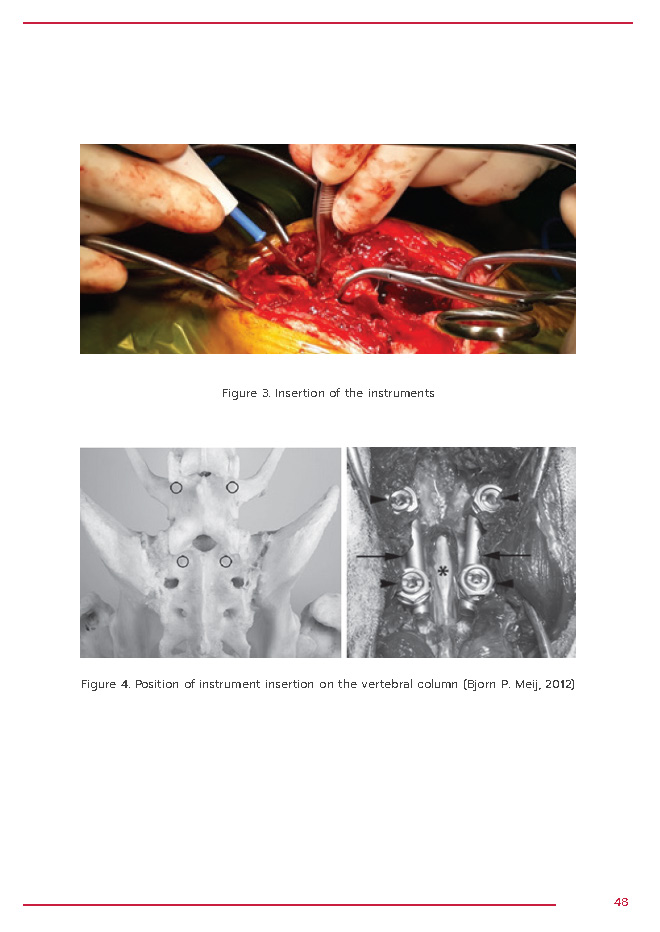
Effects of PCSO-524® on Treatment of Cranial Cruciate Ligament Rupture in Dogs after Tibial Plateau Leveling Osteotomy (TPLO) and Physical Rehabilitation

Male Labrador Retriever dog aged 3 years was suffering from left hind limb pain.
Hematological parameters were normal. Radiographic image showed swollen left stifle joint and mild osteoarthritis. Cranial cruciate ligament rupture was diagnosed.
Firocoxib 5 mg/kg sid for 2 weeks and 2 capsules of ANTINOL ® bid for 1 month were prescribed.
Tibial Plateau Leveling Osteotomy (TPLO) was operated on the dog. Post operation care included Firocoxib 5 mg/kg sid for 2 weeks and 2 capsules of ANTINOL ® bid in combination with physical rehabilitation using laser stimulation and later exercise therapy was added. Clinical signs were improved as indicated by lameness score, muscle mass and range of motion.
Five months after the operation, the dog expressed signs of right hind limb pain and radiographic image showed swollen right stifle joint and mild osteoarthritis of left stifle joint. Partial tear of cranial cruciate ligament was diagnosed. The dog was treated for thrombocytopenia until recovered before Tibial Plateau Leveling Osteotomy (TPLO) was operated on the right knee 3 months later. Radiographic examination post operation showed increased inflammation of both stifle joints.
Surgical treatment was used in combination with medication which included NSAIDs during the first 2 weeks post operation, ANTINOL®, and physical rehabilitation in order to reduce pain and inflammation. The treatment gave satisfactory results. The dog was able to use its legs without lameness, muscle was stronger, stifle angle was better and general health was improved.

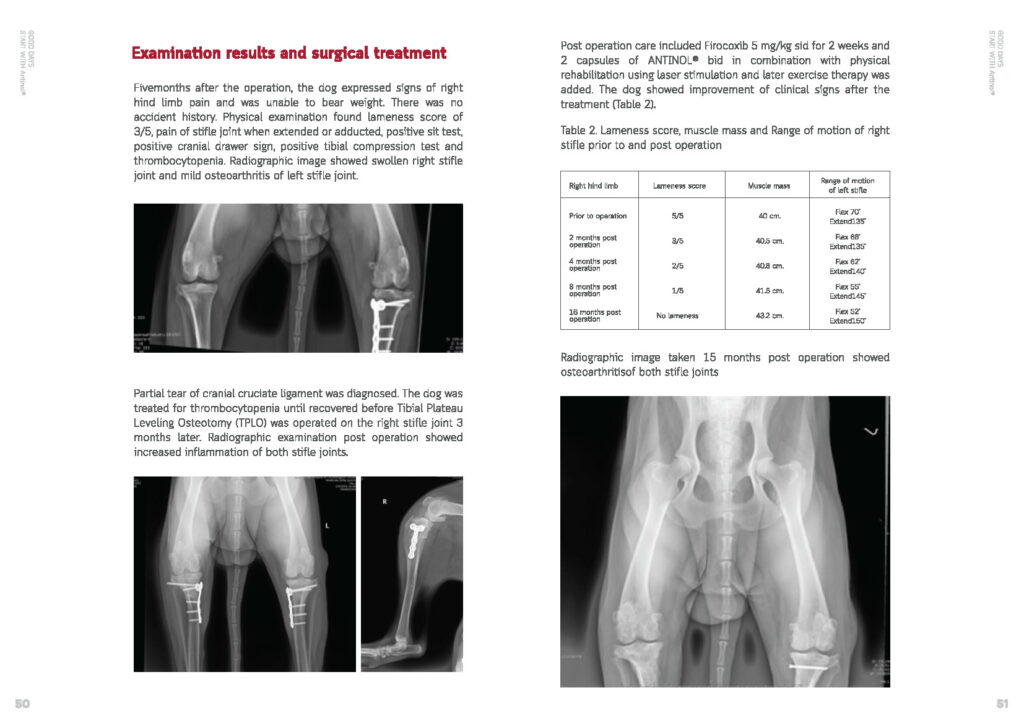
Updated Study Topics
New researches and publications related to PCSO-524® and its result in clnical test submitted by veterinarians on the global conferences every year and the data keeps growing with more studies conducted


 Authors:
Authors: